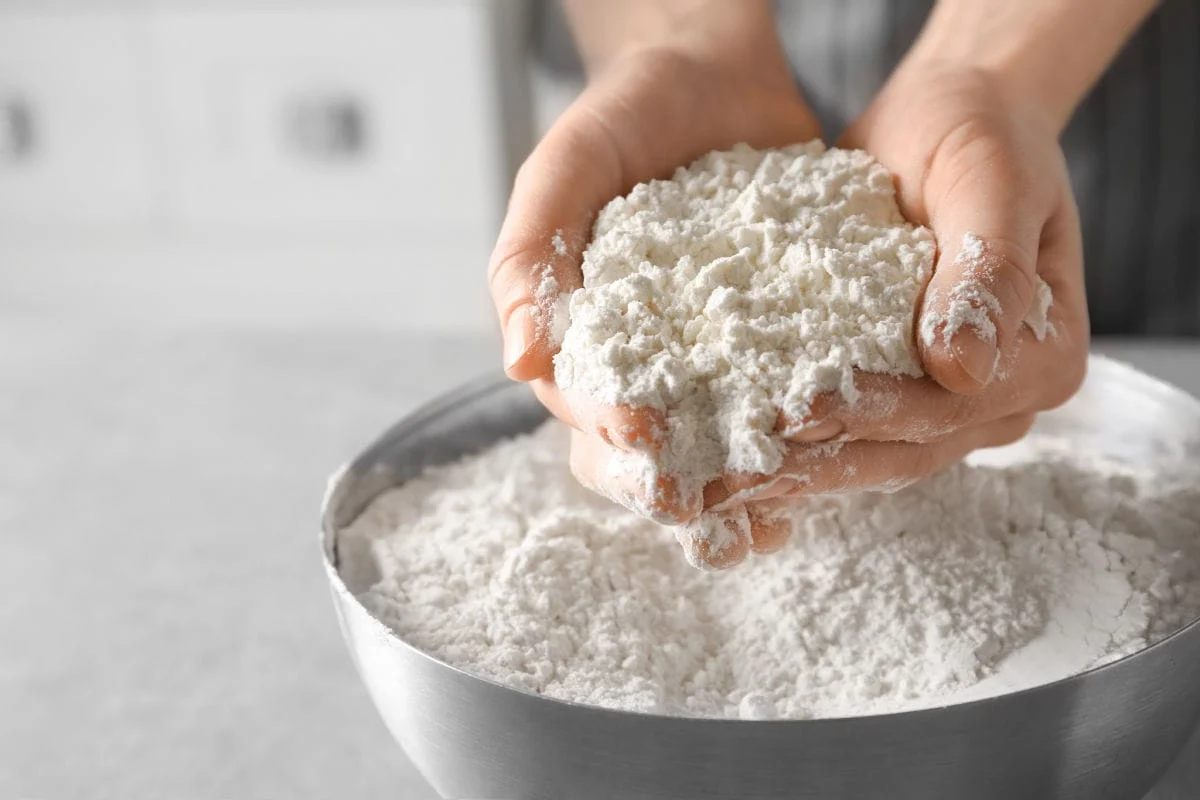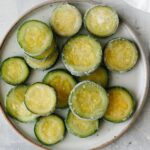You are in the kitchen, ready to make a delicious homemade bread recipe, when you look for the ingredients on the list and realize that there is one that has an unusual name: strong flour. This type of flour is not known by many, but it is very famous in the world of industrial baking.
Although it is used more frequently by bakers, you can take advantage of strong flour to make more than one homemade recipe. If you want to know everything about this magnificent product and achieve more succulent and softer breads, you cannot miss this article. We explain everything to you: what is strong flour, what is it used for and in what recipes can you use it.
What is strong flour?
Wheat flour with a higher percentage of gluten, that is, with a greater amount of protein, is known as force flour. The higher the percentage of gluten, the greater strength and greater plasticity the dough will have. Strength flour is also known by other names: bakery flour, bread flour or hard flour.
Wheat flour has high starch content, between 65-70%, and a protein content of between 9-14%. The rest of the substances it contains, such as cellulose, lipids and sugar, only make up 4% of its composition. For that reason, flours are usually classified, mainly, by their protein and gluten index.
Traditionally, talking about wheat is talking about gluten, but what does gluten represent in baking? This protein is essential for preparing pastries, as it creates a network that holds the carbon dioxide resulting from yeast fermentation. Thanks to this, the gases rise and give volume to the oven before, during and after preparation.
In short, dough with higher gluten content will have greater support, elasticity and extensibility. Therefore, it will be able to better withstand ingredients such as fats, nuts and others, without affecting the growth of the preparation.
What is the force flour?
As one of the most used products in the extensive world of baking and pastry, there are different types of wheat flour. When it comes to strength flour, the classification can vary from country to country, but it is always based on the following parameters:
- Amount of protein: usually expressed in percentages, thus specifying the amount of gluten (vegetable protein) contained in the flour.
- Strength: refers to the resistance and elasticity of the flour. To prove it, a laboratory test is carried out in which an attempt is made to break a sheet of dough. The more gluten the flour has, the stronger it will be.
- The extraction rate: this parameter indicates the amount of flour obtained for every 100 kilograms of wheat grain.
- Ash Percentage– This rating is closely related to the extraction rate, as it measures the amount of ash that remains after burning a sample of flour.
In Latin America, flour is classified according to the amount of protein. To differentiate the flours in the Latin American classification, they are assigned zeros: the more zeros, the less gluten and vice versa. To better illustrate this comparison, let’s review the classes of flours that correspond to these cases:
What is flour 0?
It is also known as high strength flour. Contains approximately 13% or more protein per 100 grams. This type of product generally covers complete or whole meal flours; which are characterized by being denser, suitable for preparing country breads, rustic breads and dough for rustic cakes.
What is flour 00?
Medium strength flour contains approximately 11-12% protein per 100 grams of product. This flour is ideal for preparing pastries with fat (oil, butter) and/or with many ingredients (raisins, strawberries, nuts). This type of recipe requires resistant and elastic dough so that the preparation can grow. With this product you can prepare puff pastry, half-moons, brioches, empanadas, strudel and other recipes.
What is the flour 000 or flour of force (55 in Spain?)
Strength flour, also known as bakery or bread flour contains approximately 10-11% protein per 100 grams. This product is generally used to prepare pizzas or dough’s that require yeast, such as roscoe de Reyes or strudel.
What is the flour 0000 (45 in Spain)
0000 flour or weak (weak or all-purpose) flour is the most refined of all. It is ideal for making soft and smooth recipes, such as cookies, cupcakes, churros, pancakes, biscuits, among others. Likewise, this is also the flour that is used to make batters or to thicken liquid recipes. It has a low proportion of gluten protein (approximately 9-10% per 100 grams).
Other types of wheat flours that are very useful in the culinary world include:
- Whole wheat flour: excellent for making breads and batters.
- Wheat semolina flour: ideal for preparing pasta and dough.
- Self-rising flour, biscuit or prepared flour: this product contains baking powder and is used exclusively to prepare cakes.
- Tempura Flour –This flour is great for battering foods, as it contains chemical boosters and bicarbonate of soda.
- Modified flours: this type of flour has been altered from its original form, adding or removing something from its composition. Some modified flours are gluten-free wheat flour, enriched flours, prepared flours, malted flours, and extricated flours.
What is the flour for?
Have you ever wondered what strength flour is for and what role it plays in recipes that contain it? Everything is in the power of flour to absorb much more water than other types of flour. Thanks to this characteristic it provides plasticity, structure, elasticity, resistance, color and flavor. On the other hand, the absorption of water also favors a better fermentation.
For this reason, strong flour is very effective when preparing recipes such as:
- Brioche
- Roscoe de Reyes
- Croissants
- Swiss buns
- Pantone
- Sweet bread
- Pizza
- Strudel
- Breads
- Focaccia
Some of these preparations have in common the use of very dense ingredients such as fats, nuts, and candied fruits, among others. This is because, for this type of recipe, it is necessary to obtain a lot of elasticity and resistance in the dough, as this favors growth and helps maintain the shape despite the weight of the ingredients.
Tip: In many of the recipes, it is not only necessary to use strong flour but also natural baker’s yeast, either fresh or dry.
Difference between strong flour and normal flour
We already know what strong flour is, what it is for and the types of wheat flour that exist, however, we still have an important question. What is the difference between the flour we commonly use and this flour? These are the characteristics of strong flour, compared to all-purpose flour:
- It has vegetable protein content (gluten) equal to or greater than 10%.
- It helps to achieve breads with a tenderer crumb, which rise easily both in fermentation and in baking. This also depends on the temperature of the workplace, the humidity, the substrate (sugars, nitrogen and some minerals), the oxygen and the amount of yeast used.
- It favors the absorption of liquids, which is why it retains moisture better. This allows for better incorporation of fatty ingredients and more efficient yeast growth.
- It offers better resistance during kneading, providing plasticity and elasticity.
- It facilitates the kneading process (compensates for poorly worked dough), as it reaches the desired texture in less time and with less effort. The result will be less sticky dough.
- This type of flour is less effective in recipes with a small amount of water (300 ml of water for every ½ kilo of flour), since more yeast needs to be added and, consequently, the flavor is modified.
- Works great with bakers or dry yeast.
- Provides harder crusts.
- Holds better long fermentations.
Unlike strong flour, loose flour, also called all-purpose flour, has the following characteristics:
- Contains a protein index equal to or below 9-10%.
- Provides a compact texture to breads.
- It works best in recipes that don’t contain too much liquid or fat.
- It is more effective in short-term fermentations.
- Provides more tender crusts.
- Best fermented with baking powder or baking soda.
- It is favored by short fermentations.
- It works effectively as a thickener or to coat foods.
Can you use strong flour for sponge cake?
The sponge cake is a light batter and its final texture is much fluffier than a cake (heavy batter). The sponge cake has no or very little fat, since its consistency basically depends on the air trapped in the eggs during beating, and the application of baking powder (or baking soda).
To get a very fluffy and light cake, the whites and yolks should be beaten separately or together, in order to achieve as much air as possible. In this part of the preparation, a good shake guarantees the incorporation of air into the mixture and thus, its subsequent growth and sponginess. However, when we add the flour (even the weak one) we should only beat what is necessary, until achieving the total integration of the ingredients, otherwise, the protein will develop and the preparation will be caked.
What does this all mean? The essence of the sponge cake is its sponginess and the excess of gluten does not favor its texture, as it also happens with some other confectionery creations. In other words, strong flour, due to its characteristics, is incompatible with this preparation. However, as in everything, there are certain exceptions, as is the case of the Japanese Kasturba sponge cake, where the use of flour is essential, since this preparation does not use yeast and, consequently, its texture is more elastic.
If what you want is to make a sponge cake that is super soft and fluffy, we invite you to visit our article How to make a sponge cake.
How to prepare your own homemade flour?
Do you want to prepare delicious bread but you don’t have flour on hand or you can’t find it in the market? Don’t worry, because the solution is very simple: you can prepare it at home! To make your own homemade strong flour, you only need 2 ingredients:
- all-purpose flour
- Wheat gluten (vital wheat gluten or any other).
The procedure is very simple:
- In a bowl, add a cup of all-purpose flour and a tablespoon of wheat gluten. Remember, for every cup of weak flour, add a tablespoon of gluten.
- Mix with a balloon whisk, until both ingredients are incorporated.
- Sift the resulting flour into another bowl at least 2 times.
- Measure the flour again, this time to the measurements required by the recipe you want to make.
This is not the only way to prepare homemade flour; there is another more precise way. However, this one is easier and quite effective.
Recipes with strong flour
As we have seen, there are many recipes in which you can take advantage of the characteristics of strong flour. If you want to experiment and start with an easy recipe, start with this delicious homemade baguette recipe! This French bread is very easy to make and the result is succulent. Do not worry about the kneading, it really is very simple and the result is guaranteed. Without further ado, let’s get to work!
Ingredients
- 400 ml of warm water
- 15 g fresh baker’s yeast
- 2 tsp. salt
- 500 g of strong flour
- 100 g of common wheat flour
- 1 tablespoon olive oil
- 100 ml of water
- 1 tsp. salt



